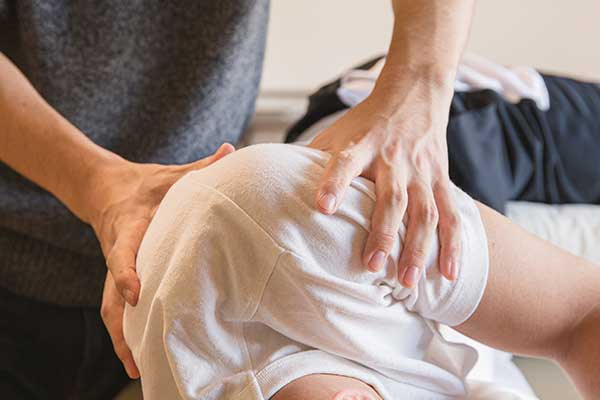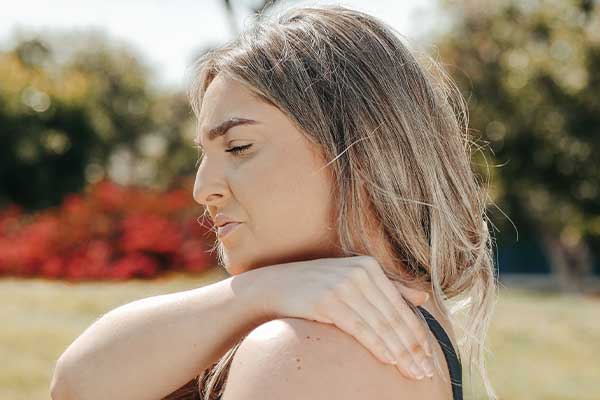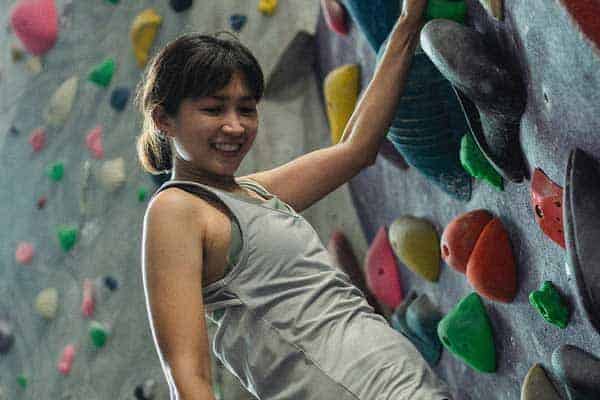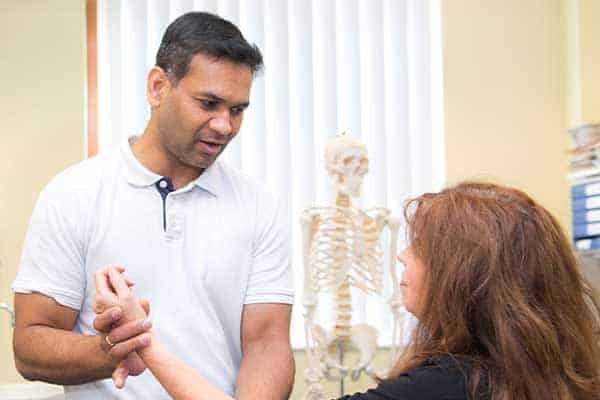The Acromioclavicular joint (AC joint) is a small joint between your collarbone and your shoulder blade.
The types of injury that occur to the AC joint include sprains and joint separation, where the collarbone is forced away from the shoulder blade.
When the AC joint becomes worn through general usage, you may also experience AC joint arthritis.
What causes AC joint injuries?
AC joint separation typically occurs as a result of a trauma, such as a fall onto the side of your shoulder or a collision in sport. The injuries associated with AC joint separation range from a mild sprain, where the ligaments have been slightly stretched or torn but the joint remains in place, to a complete tear of the ligaments that results in full separation of the collarbone from the shoulder blade.
AC joint arthritis is caused by normal wear and tear, which roughens the smooth cartilage in the joint and may cause inflammation, stiffness and pain. The development of arthritis in the AC joint can also be linked to a previous shoulder injury.
What are the symptoms of AC joint injuries?
Symptoms will vary according to the type and the severity of the injury.
In the case of a full separation of the AC joint, you are likely to notice what is called a ‘step deformity’, where the end of your collarbone is sitting visibly higher than the rest of your shoulder.
Other typical symptoms include:
- Pain over the top of your shoulder that gets worse when you press on it.
- Pain that increases when you reach up or when you lift or carry something.
- A slight or more noticeable bump under the skin at the end of your collarbone.
- Pain when reaching your arm across your chest.
- Pain when lying on the side of your shoulder.
Depending on the type of injury, these symptoms may come on suddenly or gradually. When the injury has developed slowly over time, you may feel no pain at all.
How are AC joint injuries diagnosed?
If you have injured your shoulder in an accident or fall, or if you are experiencing significant loss of movement in your shoulder, you should always seek an assessment from a GP or another qualified health professional.
In the case of an obvious step deformity, you are advised to visit your local A&E to get an immediate assessment.
Ligament sprains associated with the AC joint are graded as mild, moderate or severe.
Even in the case of mild symptoms, if these persist you should consult your GP. They will examine you to assess your injury and recommend the appropriate treatment.
What are the treatment options for AC joint injuries?
Depending on the type and severity of your injury, your healthcare professionals may recommend self-management, physiotherapy, injections or surgery to stabilise the joint.
It is important to rest your shoulder and to manage the pain during the first few days.
You could place an ice pack on the shoulder area for 10-15 minutes, every 2-3 hours, to relieve pain. (Do not put ice directly next to skin as it may cause ice burn. Wrap it in a damp tea towel. Remove the pack if irritation increases. Allow the area to return to normal temperature before reapplying the ice.)
Try painkillers such as paracetamol, with or without codeine added. Anti-inflammatory painkillers such as Ibuprofen, which also come as creams or gels to rub over the injured area, may also help with pain and soreness. However, you should ask your doctor or pharmacist for advice, as these may slow the healing process.
Once the pain has started to improve, it may be advisable to start moving and exercising your shoulder again, in order to strengthen the healthy muscle and tendon fibres around the tear. Massage of the top of the shoulder has been shown to help in some cases and sometimes taping your shoulder can help to support the joint. Your GP or physiotherapist will be able to advise.
In some cases, steroid injections or surgery may be recommended.
What is the prognosis (outlook) for AC joint injuries?
Recovering from an AC joint injury may take weeks or months, depending on how severe it is and how effective your rehabilitation regime.
Mild to moderate injuries should heal themselves over 2-3 months.
Severe injuries involving completely torn ligaments can take much longer to recover from and may not fully repair themselves.
How can I prevent recurrence of AC joint injuries?
It is important not to overdo your recovery exercises or to return to sports too early.
However, it is also unwise to avoid exercise, as this can lead to further problems. Keeping healthy and active is important for your general health and wellbeing.
Continue with exercises to restore and maintain strength and function in your shoulder as these will help to increase stability in your AC joint.
Recommended exercises (click to expand):
Post UL chain
- Lie face down with your arms bent and your palms flat on the floor beneath your shoulders.
- Pull your shoulder blades towards each other, keeping your neck extended.
- Raise your head, tucking your chin in towards your chest, and lift your arms off the floor.
- Move your hands forwards, keeping them off the floor, until they touch as though you are in a diving posture.
- Bring your hands back to the starting position, keeping your arms and head lifted and controlling your shoulder blades.
- Maintaining this position, repeat the movement.
Narrow press up
Either:
- Start on all fours, with your shoulders above your hands and your hips above your knees.
- Extend first one leg and then the other, tightening your abdominal and buttock muscles to maintain a straight line from your shoulders to your heels.
Or:
- Lie face down with your arms bent, your palms flat on the floor beneath your shoulders, and your toes dug into the floor.
- Push yourself up through your arms, tightening your abdominal and buttock muscles, and straighten your arms, keeping your body in a straight line from your shoulders to your heels.
Then, from this rigid starting position:
- Bend your elbows, keeping your arms close in beside your body and your gaze between your hands.
- Do not let yourself touch the floor at the bottom. Instead, push back through the heels of your hands to straighten your arms out again.
- Keep your body straight and do not allow your abdomen to sag or your buttocks to arch.
- Repeat this movement.
Horizontal flexion
- Start on all fours, with your shoulders above your hands and your hips above your knees.
- Push the heels of your hands into the floor to make your shoulder blades flatten against your back.
- Keeping your elbow straight, lift one arm up and forwards ahead of you.
- Make sure that your back remains straight and your hips stay in a neutral position during this movement.
- Swing your extended arm out to the side and back to your hip, keeping it raised as though it is moving above an imaginary table top.
- Repeat the arm movement.
Forward flexion with external rotation
- Stand upright with your arms down in front of you, and an exercise/resistance band (or similar) held or looped between your hands.
- Bring the band up in front of you, holding your hands apart to keep tension in the band.
- Maintaining the distance between your hands, lift your arms up towards the ceiling.
- Control this movement back down to the starting position and repeat.
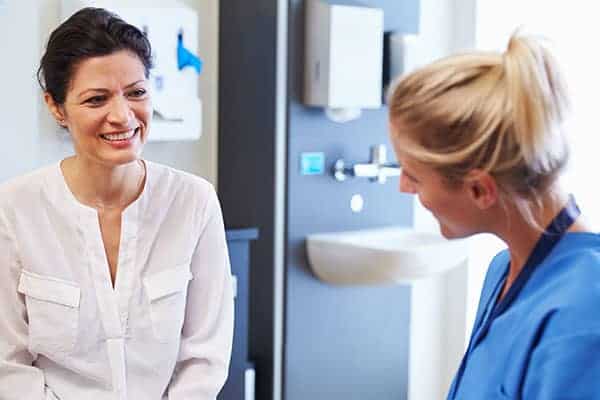
How to get referred
Find out how to get referred to Practice Plus Group MSK & Diagnostics for NHS treatment.

